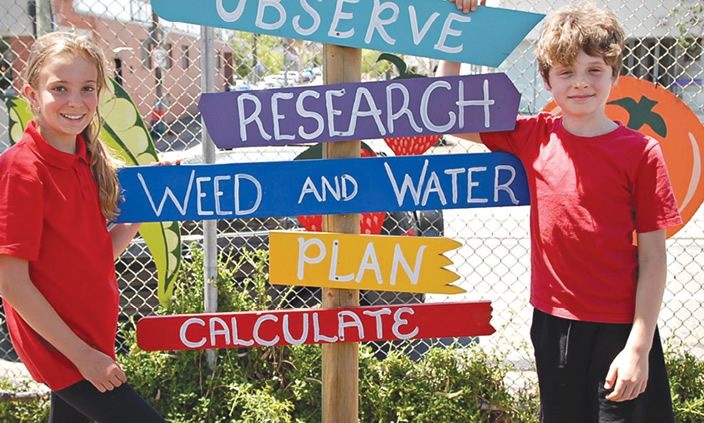
In a world that’s changing quickly, young people need to develop the knowledge, skills, and values that will help them address whatever the future brings, Cool Australia’s Kirsty Costa writes.
Sustainability education links your teaching to the world outside your classroom and answers students when they ask, ‘Why are we learning this’?
Sustainability addresses the ongoing capacity of Earth to maintain all life. Sustainable patterns of living meet the needs of the present without compromising the ability of future generations to meet their needs.
Often when people think about sustainability, they picture solar panels, recycling bins and trees. But sustainability is much more than this!
Sustainability is about working within the interconnected systems that exist on Earth. The United Nations call these systems the ‘Three Pillars of Sustainability’. The Three Pillars are found throughout the learning outcomes of the Early Years Learning framework and sustainability as a cross-curriculum priority of the Australian Curriculum:
• Planet – ecological and environmental systems, eg ecosystems, plants, animals, weather
• People – social systems, eg families, friendships, communities, health, education, and
• Profit – economic systems, eg economies, budgets, employment, finances.
So where does sustainability fit into your teaching? Instead of being an add on, use it to enrich your existing curriculum by providing real life experiences that enable students to develop their understanding and skills.
For example, in primary English, students learn how to identify the audience and purpose of imaginative, informative and persuasive texts. Download Blue The Film inquiry units on Cool Australia’s website that help students create persuasive texts about how we can improve the health of the world’s oceans.
In secondary English, students create imaginative, informative and persuasive texts that present a point of view and advance or illustrate arguments. The free teacher toolkit on Cool Australia’s website for La Trobe University’s Aspire Generation will help your students develop their skills through connections with their community.
Sustainability can also be combined with other cross-curriculum priorities to create rich learning experiences for students. The Cool Burning primary and secondary teaching resources explore the links between sustainability and Aboriginal and Torres Strait Islander histories and cultures. Geography and science lessons explore how traditional land managers use fire stick burning to reduce the impact of bushfires in Northern Australia. Students then investigate land management in their local area.
Education really shines when you use sustainability to enhance your existing lessons. Students get a chance to apply their learning in real life contexts and develop their resilience.
Over 70,000 teachers are using Cool Australia’s units of work, lesson plans, worksheets and online professional development to switch on young learners. Tap into the support at www.coolaustralia.org
Kirsty Costa is an award-winning educator and Head of Professional Development at Cool Australia. She has helped thousands of teachers to connect their lessons to the world outside the classroom. Kirsty was awarded the 2013 Victorian Environmental and Sustainability Educator of the Year and was trained by Al Gore as a Climate Reality Leader in 2014. Kirsty was a keynote presenter at the IEUA NSW/ACT Branch’s recent Environment Conference.


































































































































